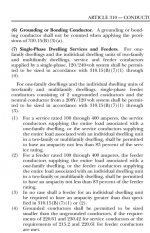"The feeder once it is tapped it is no longer providing providing the entire load. The internal tap portion doesn't need to meet the feeder requirements but also the extended portion from that breaker to the EV charger is a branch circuit of the device, the continuation of the apt feed from that device is still a feeder and is required to meet the limitations of a feeder and is not carrying 100% of the load as part of it is distributed to the EV charger and the 83% allowance no longer applicable.
I could acquiesce to the idea that the feeder from the first overcurrent to the tap is providing 100% of load of a dwelling unit, but from that tap to the apt is no longer carrying 100% of the load but only a proportional portion relative to the total loads applied to the apt and EV charger combined.


